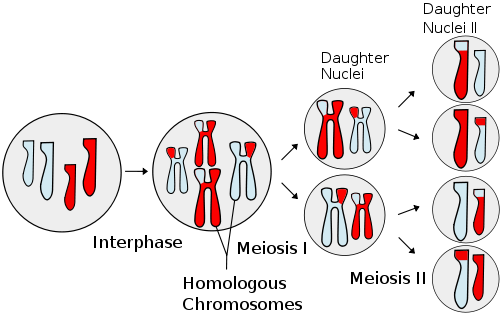A way in which each of a pair of chromosomes can identify its opposite equivalent has been unravelled by scientists  in Japan.
in Japan.
Viable eggs and sperm, known as gametes or germ cells, must contain just one of each of the pairs of chromosomes found in the majority of an organism's cells. This ensures that, when fertilisation takes place and the genetic complements of egg and sperm mix, the resulting embryo contains the correct chromosome count.
For a chromosome, correct identification of your opposite number is also critical to the generation of genetic diversity because, during the process of germ cell production, matching chromosomes exchange whole chunks of their DNA for the corresponding regions in their counterparts.
Yet, despite years of studying dividing cells, scientists still don't know how this recognition is achieved.
Now, using a yeast called Schizosaccharomyces pombe as a convenient model organism, Da-Qiao Ding, from the Advanced ICT Research Institute in Kobe, Japan, has discovered a gene that seems to play a key role in the process.
Known as sme2, it produces a so-called non-coding RNA molecule. This is a string of genetic letters read from the DNA but not used to encode a protein.
Instead, the RNA sequences from both copies of the chromosome first accumulate, probably by associating with an as-yet unidentified protein, to form a dot-like structure in the nucleus.
They then bind to their sites of origin on each chromosome, tethering the two DNA molecules together, side-by-side and in the correct alignment.
To prove that this was the case, the Japanese team tried disrupting the sme2 sequence and noted that the chromosomes ceased to pair properly at this site. Next, they moved the sme2 genetic material to another location on the chromosome and demonstrated that pairing was resumed and drammatically elevated at the new site.
However, whilst compelling, this isn't the whole story, as researcher Abby Dernberg, who is doing similar work on C. elegans nematodes and contributed a commentary on the work published this week in Science, points out.
"I don't think the process depends upon one single mechanism. But this work by Ding and her colleagues using S. pombe yeast is really important in shedding light on what was previously a totally grey area; it will help to motivate experiments in other model organisms and help to clarify the role on RNA in the process of [chromosome] recombination."










Comments
Add a comment